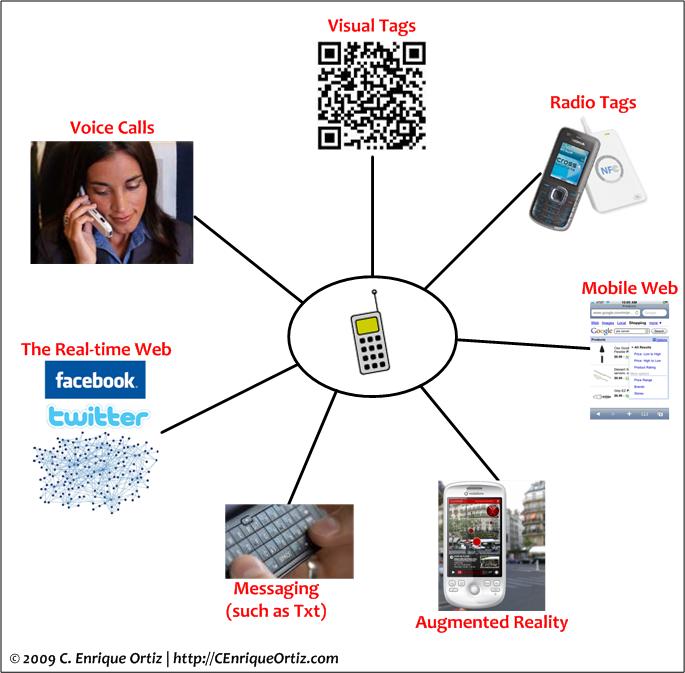On Physical and Web Interactions. Everything around us is data. The paper and plastic in our wallets that we use for our driving license and ID cards, our credit and debit cards, our receipts, coupons and tickets, and even our business cards*. And it doesn’t stop there. Everything around us is actionable. The magazines that we read, the product items at the store, the posters that we see, the soda-cans we drink from, the objects that we pick up. This is information ubiquity.
*Adapted from Mike Elgan, ComputerWorld, The RawFeed
Now imagine a world where we can interact with these objects around us, using your mobile handset. All is data, that can be carried on a mobile phone. All is data, that can be transformed into information and into knowledge.
At at the center of this is the mobile handset, as illustrated below:

The ability to interact with the objects around us (see Interaction Triggers in Mobile Applications), combined with the user’s mobile context, allows for new models for information and computing, centered on the individual — what I call People-Centric computing.
Let’s explore the attributes of Information Ubiquity:
- Information everywhere
- Addressable (and thus identifiable) information, or workflows for that matter
- Think physical interactions, application triggers and physical browsing. A number to call, a URL, a short-code, barcodes, radio tags
On books, magazines, posters, soda cans, billboards - For advertisement, for authentication, for control, for quick action, access to information
- Some interactions are more manual than others
- The Mobile Handset is at the center of this ubiquity phenomena
You can explore more about this topic by reading my presentation below:
Also, see:
Pingback: About Mobility » Blog Archive » Mobile Social Contextual Applications & Services
Pingback: About Mobility » Blog Archive » On Physical and Web Interactions
Pingback: On Physical and Web Interactions « Austin Entrepreneur Network